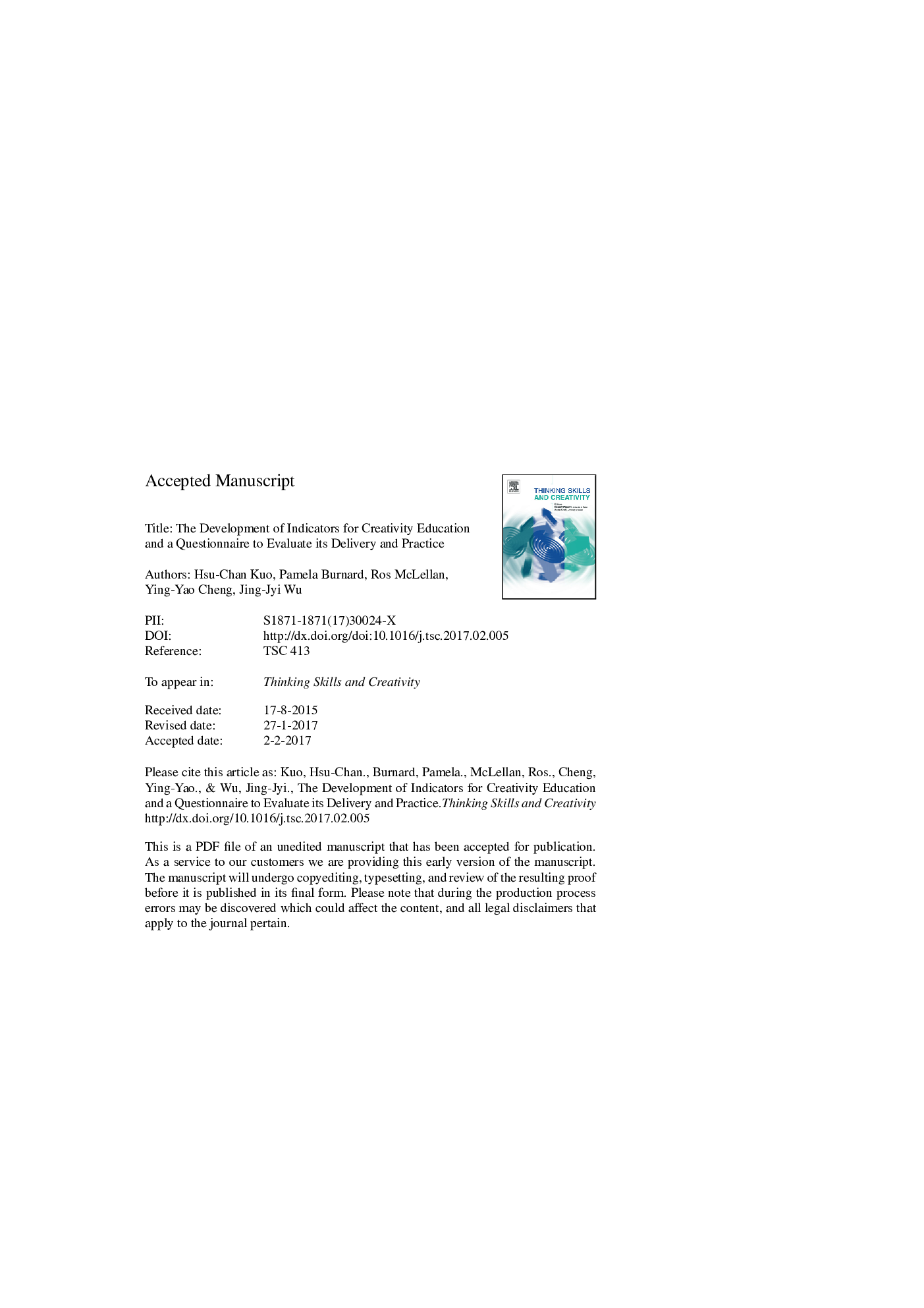| Article ID | Journal | Published Year | Pages | File Type |
|---|---|---|---|---|
| 4941865 | Thinking Skills and Creativity | 2017 | 33 Pages |
Abstract
This research aimed to develop a set of indicators for creativity education and a questionnaire to evaluate its delivery in Taiwan. Four research methods were systematically combined to develop the indicators and the questionnaire, including interviews, document analysis, onsite visits, and a survey. The indicator-informed questionnaire was then administered to a total of 1015 school administrators and teachers in Taiwan's primary and secondary schools (pre-test NÂ =Â 397 and post-test NÂ =Â 658). The results from confirmatory factor analysis (CFA) and Structure Equation Modeling (SEM) revealed that the questionnaire had very good measurement properties with five interrelated latent variables, including creative teachers, creative students, creative campus, interdisciplinary practice, and creative database. The questionnaire's reliability was calculated at a Cronbach's alpha of 0.97, and the five subscales' Cronbach alpha scores ranged from 0.82 to 0.95. Evidence revealed that the practice of creativity education program in Taiwan was very effective. Overall, among the five subscales, the creative student subscale had highest ratings (most helpful), whereas interdisciplinary practice subscale had the lowest ratings (least helpful). The questionnaire has great potential to be utilized in government, educational institutions, and other sectors as a reference tool to evaluate the delivery and practice of creativity education.
Related Topics
Social Sciences and Humanities
Psychology
Developmental and Educational Psychology
Authors
Hsu-Chan Kuo, Pamela Burnard, Ros McLellan, Ying-Yao Cheng, Jing-Jyi Wu,
